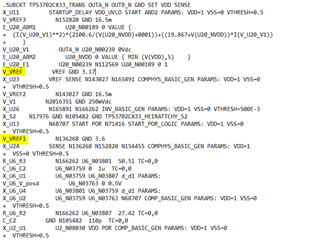Tool/software:
Hello,
I would like to perform simulations for the TPS3702CX12 voltage supervisor IC.
On TPS3702 data sheet, product information and support | TI.com, the model provided is for the TPS3702CX33 IC with different threshold voltage levels.
Is there a possibility to simulate the behavior of the TPS3702CX12 (e.g. by adjusting some parameters of the TPS3702CX33-model)?
Thanks for your help!
Best regards,
Thomas




